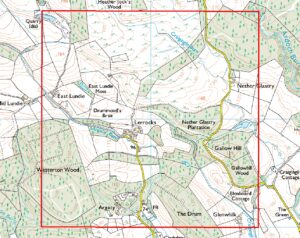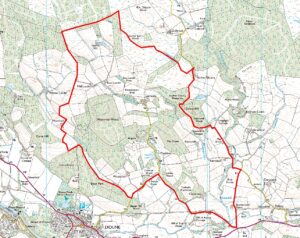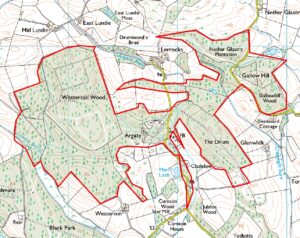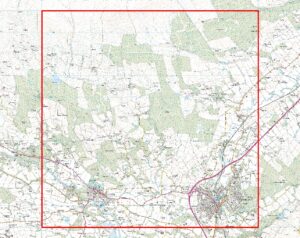It is ultimately your decision as to where you choose to locate your Raptor Patch but the following guidance should help you pick somewhere that will generate the most useful information for the SRMS.
Don’t deliberately choose your Raptor Patch based on any prior knowledge of existing nest sites. The focus of Raptor Patch is about helping the SRMS get a better handle on the distribution and abundance of some of the more widespread raptor species such as Buzzard, Kestrel, Sparrowhawk and Raven.
If you follow the guidance below, it is likely that your Raptor Patch will have the potential to support one or more breeding pairs of at least one of these species. However, it is also important to remember that negative data (telling us where one or more of these species are absent) are extremely useful – though less fun to collect.



Accessing your patch
Your Raptor Patch needs to be somewhere that you can access regularly – at least once a month during the breeding season. This might mean that you choose somewhere near to where you live or work, somewhere that you already visit on a regular basis, or somewhere new to you that you can get to without difficulty and want to become familiar with.

Keep it manageable
Bigger is not necessarily better. We would much rather see you taking on a relatively small Raptor Patch, say or a 2 km x 2 km square (also known as a tetrad) that you know that you can commit to surveying comprehensively year-on-year rather than being overly ambitious and biting off more than you can chew.
Consistency is key. Some habitats will be more challenging to survey than others, especially when you are getting started, so if you are in any doubt about what you think you might be able to with the time that you have available please get in touch for further advice. It will be possible to systematically expand from a very small patch, once you have had a chance to find your feet.
Know your boundaries
Your Raptor Patch needs to be well defined from the outset. Whether, you choose a regular square based on Ordnance Survey grid or opt for a more irregularly shaped patch, perhaps delimited by physical features such as roads, rivers or forest edges, it is important that you know where the boundaries of your patch are and that you consistently monitor within these limits.
Indulge your curiosity
It is important that you are genuinely interested in your Raptor Patch, as you will need to feel motivated to locate all the raptors of the focal species breeding within it. Raptor monitoring should be fun!
Where are the gaps in coverage that need filling?
At the moment there are few studies focussing on the widespread raptor species across Scotland, so the chances are that wherever you are proposing to locate your Raptor Patch there won’t be anybody already monitoring these species intensively. If you take a look at the species pages for the widespread species on the SRMS website you will see where the existing long-term studies are located.
If having read this you would like further assistance in selecting an appropriate area, please contact Gaby Peniche, the Scottish Raptor Monitoring Coordinator. She, will be happy to recommend an appropriate area that is manageable according to the time that you are able to commit to monitoring and be able to ensure that your study is compatible with any ongoing study of rarer species that may already be operating in the same area.
